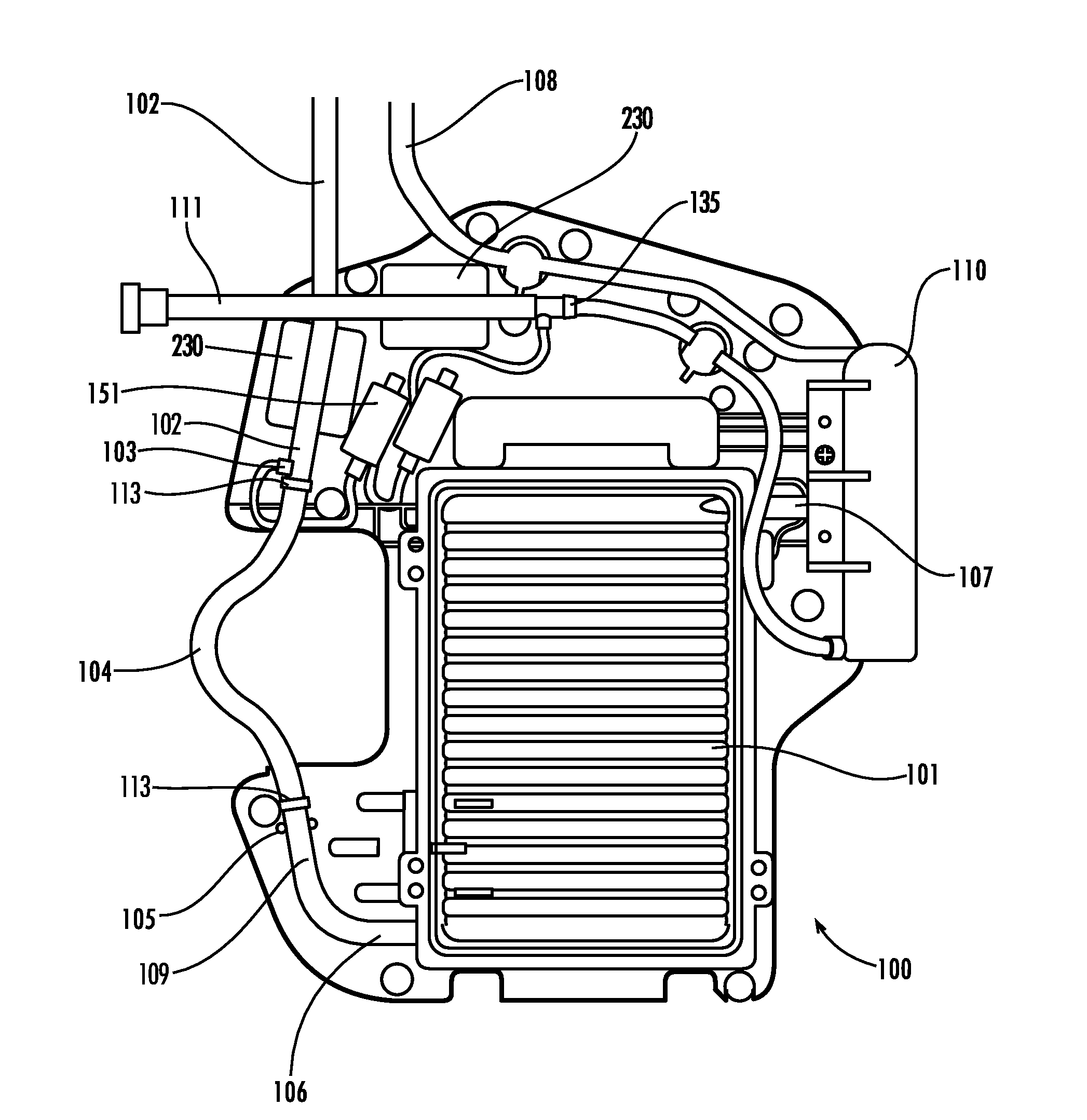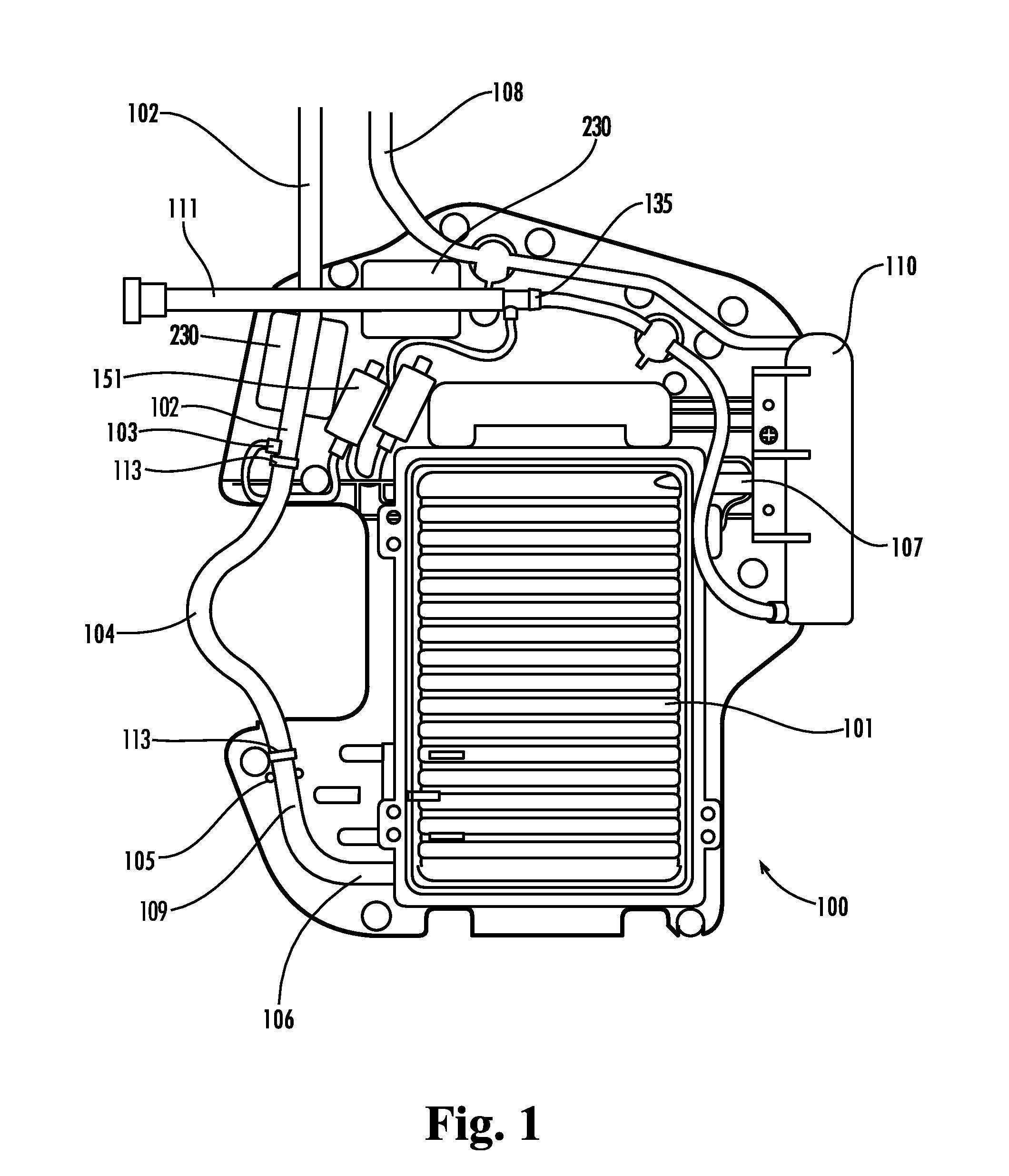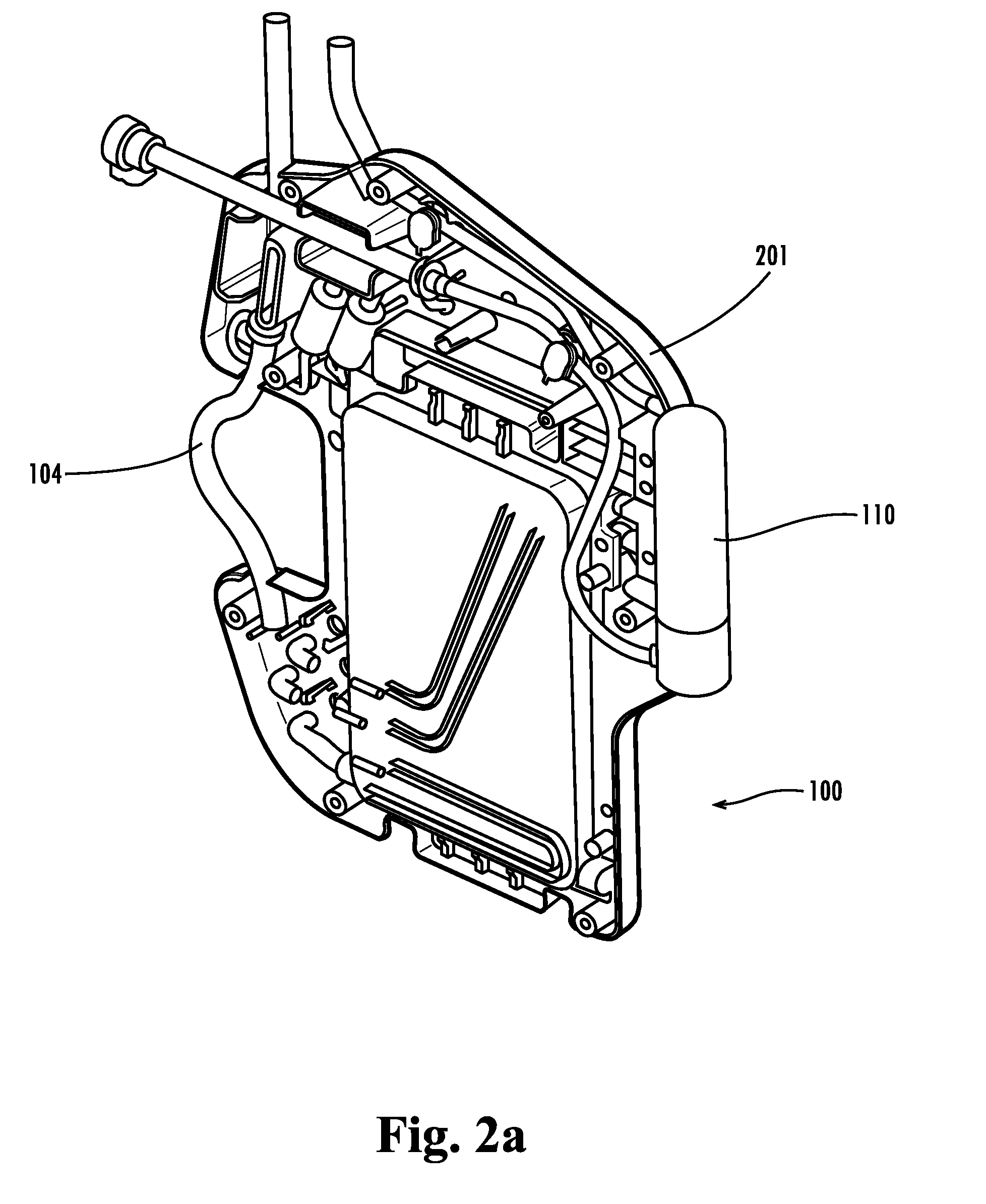Dynamic Range Motor For A Pump Device
a technology of dynamic range and pump device, which is applied in the direction of positive displacement liquid engine, machine/engine, lighting and heating apparatus, etc., can solve the problems of physiological damage resulting from excessive temperature exposure such as burns or other such scarring, placing patients at further risk, and affecting the flow rate. accuracies, constant length, constant tension
- Summary
- Abstract
- Description
- Claims
- Application Information
AI Technical Summary
Benefits of technology
Problems solved by technology
Method used
Image
Examples
example
[0152]In yet another embodiment, the pump device, described herein, may be used during renal replacement therapy, such as kidney dialysis, to treat patients with renal impairment or failure. Accordingly, this embodiment may be used to circulate cleansed or filtered blood through a patient.
[0153]A device configured for use in this embodiment may include at least two pumping mechanisms, at least two dynamic range motor drive assemblies, a central controller, and a dialysate bath. Accordingly, the blood may be pumped by one pumping mechanism and motor drive assembly through multiple capillary tubes, forming a semi-permeable membrane between the dialysate bath and the blood, as is known in the art. The dialysate may be pumped by another pumping mechanism and motor drive assembly across the capillary tubes in a direction opposite of the direction the blood is pumped through the capillary tubes, so as to create a counter current bath of osmotic fluid. The osmotic fluid or dialysat...
PUM
 Login to View More
Login to View More Abstract
Description
Claims
Application Information
 Login to View More
Login to View More - R&D
- Intellectual Property
- Life Sciences
- Materials
- Tech Scout
- Unparalleled Data Quality
- Higher Quality Content
- 60% Fewer Hallucinations
Browse by: Latest US Patents, China's latest patents, Technical Efficacy Thesaurus, Application Domain, Technology Topic, Popular Technical Reports.
© 2025 PatSnap. All rights reserved.Legal|Privacy policy|Modern Slavery Act Transparency Statement|Sitemap|About US| Contact US: help@patsnap.com



